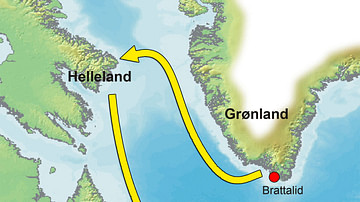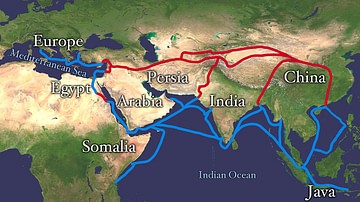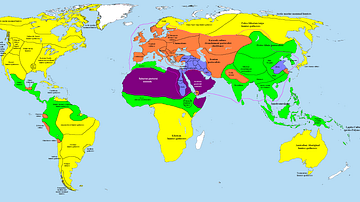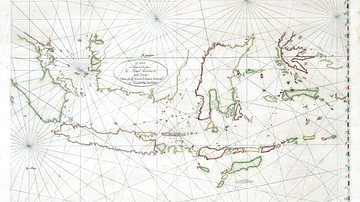Illustration
In 1000 CE, Europeans had a limited but expanding awareness of the wider world, shaped by trade, exploration, and religious contacts. The Vikings had pushed westward, reaching Greenland and Vinland (North America). At the same time, merchants and pilgrims traveled south and east, engaging with the Islamic Caliphates, which connected them to India, Central Asia, and China through trade networks like the Silk Road. Knowledge of Africa was mostly confined to Egypt, the Maghreb, and the Ghana Empire, which was known through trade and Islamic sources. There was also awareness of the East African Swahili Coast, where cities like Mogadishu, Kilwa, and Sofala were active in the Indian Ocean trade. However, much of sub-Saharan Africa remained unknown. Classical geography, religious texts, and secondhand accounts from travelers shaped European perceptions of the world beyond their borders.
About the Author
Cite This Work
APA Style
Netchev, S. (2025, February 17). The World Known to Europeans in 1000 CE. World History Encyclopedia. Retrieved from https://www.worldhistory.org/image/20051/the-world-known-to-europeans-in-1000-ce/
Chicago Style
Netchev, Simeon. "The World Known to Europeans in 1000 CE." World History Encyclopedia. Last modified February 17, 2025. https://www.worldhistory.org/image/20051/the-world-known-to-europeans-in-1000-ce/.
MLA Style
Netchev, Simeon. "The World Known to Europeans in 1000 CE." World History Encyclopedia. World History Encyclopedia, 17 Feb 2025, https://www.worldhistory.org/image/20051/the-world-known-to-europeans-in-1000-ce/. Web. 18 Apr 2025.








